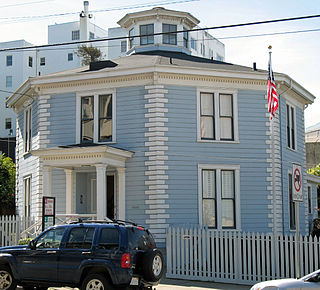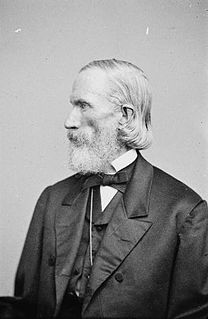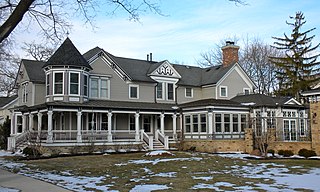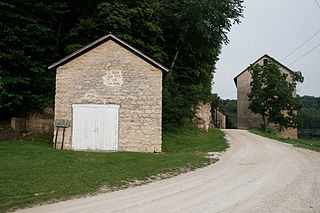Petty–Roberts–Beatty House | |
The Octagon House in 2011 | |
| Location | 103 N. Midway, Clayton, Alabama |
|---|---|
| Coordinates | 31°52′43″N85°26′58″W / 31.87861°N 85.44944°W Coordinates: 31°52′43″N85°26′58″W / 31.87861°N 85.44944°W |
| Built | 1861 [1] |
| Architect | Petty, B.F. |
| Architectural style | Octagon house |
| NRHP reference # | 74000400 [2] |
| Added to NRHP | January 21, 1974 |
The Petty–Roberts–Beatty House, also known as the Octagon House, is an historic octagonal house in Clayton, Alabama, United States. The structure was one of only two antebellum octagonal houses built in Alabama and is the only one to survive.

Octagon houses were a unique house style briefly popular in the 1850s in the United States and Canada. They are characterised by an octagonal (eight-sided) plan, and often feature a flat roof and a veranda all round. Their unusual shape and appearance, quite different from the ornate pitched-roof houses typical of the period, can generally be traced to the influence of one man, amateur architect and lifestyle pundit Orson Squire Fowler. Although there are other octagonal houses worldwide, the term octagon house usually refers specifically to octagonal houses built in North America during this period, and up to the early 1900s.

Clayton is a town in and the county seat of Barbour County, Alabama, United States. The population was 3,008 at the 2010 census, up from 1,475 in 2000.

Alabama is a state in the southeastern region of the United States. It is bordered by Tennessee to the north, Georgia to the east, Florida and the Gulf of Mexico to the south, and Mississippi to the west. Alabama is the 30th largest by area and the 24th-most populous of the U.S. states. With a total of 1,500 miles (2,400 km) of inland waterways, Alabama has among the most of any state.
This unusual house was built by Benjamin Franklin Petty starting in 1859 and completed in 1861. Petty was a carriage and furniture merchant who was a native of New York and pioneer settler of Clayton. The house was patterned after a design made popular by Orson Squire Fowler's book, A Home For All, or the Gravel Wall and Octagon Mode of Building which was published in 1854.

New York is a state in the Northeastern United States. New York was one of the original thirteen colonies that formed the United States. With an estimated 19.54 million residents in 2018, it is the fourth most populous state. In order to distinguish the state from the city with the same name, it is sometimes referred to as New York State.

Orson Squire Fowler was a phrenologist and lecturer. He also popularized the octagon house in the middle of the nineteenth century.
In April 1865, the house was used as staff headquarters for Union Cavalry Commander General Benjamin H. Grierson. Petty's heirs sold the property to Judge and Mrs. Bob T. Roberts in 1901. In 1981, under the administration of Mayor Edward C. Ventress, the property was purchased from the estate of Mary Roberts Beatty Armistead by the Town of Clayton which has overseen its renovation. [1] [3]

Benjamin Henry Grierson was a music teacher, then a career officer in the United States Army. He was a cavalry general in the volunteer Union Army during the Civil War and later led troops in the American Old West. He is most noted for an 1863 expedition through Confederate-held territory that severed enemy communication lines between Vicksburg, Mississippi and Confederate commanders in the Eastern Theater. After the war he organized and led the Buffalo Soldiers of the 10th Cavalry Regiment from 1866 to 1890.
The house was added to the National Register of Historic Places on January 21, 1974. [2]

The National Register of Historic Places (NRHP) is the United States federal government's official list of districts, sites, buildings, structures, and objects deemed worthy of preservation for their historical significance. A property listed in the National Register, or located within a National Register Historic District, may qualify for tax incentives derived from the total value of expenses incurred preserving the property.



















